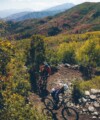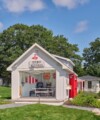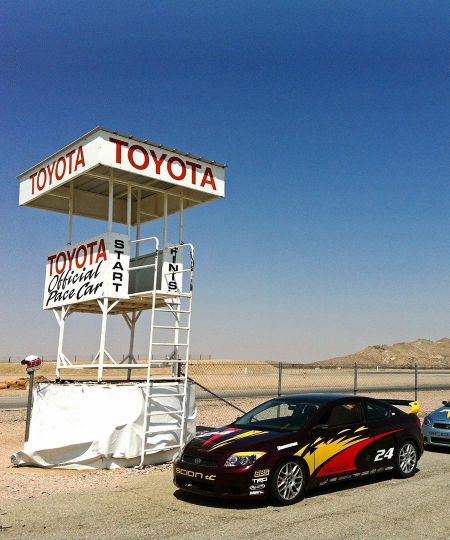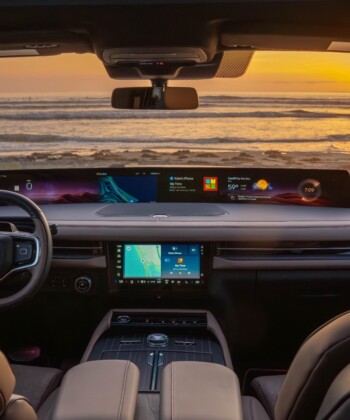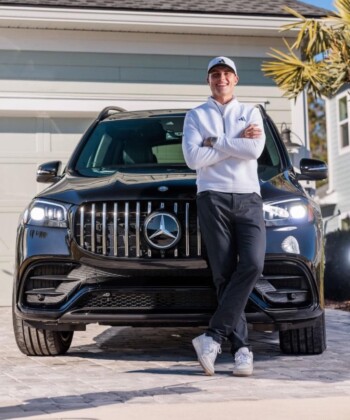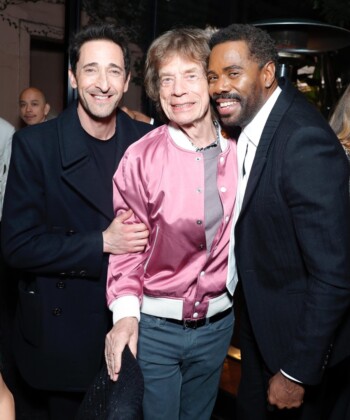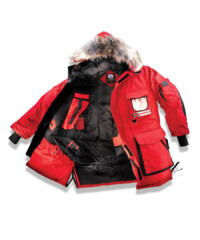Some people use high-performance cars as a reward, a status symbol that they give themselves when they’ve ascended another rung in their chosen profession. However, they often neglect to consider the high-performance aspect of their purchases, and a Google search will yield images and video clips of novice drivers spinning out (or worse) in their six-figure speed machines. Many have the romantic notion that driving fast requires only three things: a powerful car, reckless abandon and a dollop of God-given talent. But the truth is, that combo is a sure recipe for disaster (and natural-born drivers only exist in movies). If you’re laying out serious cash for a precision automobile, you should consider investing in bringing your behind-the-wheel skills up to speed as well. While driving schools may seem like an expensive indulgence—averaging around $1,000 a day—they could save your life. And, at the very least, they’re a bargain compared to what you might otherwise spend on speeding tickets and on lawyer’s fees, trying to get those points back on your license.
You can find countless driving schools around the U.S., offering a variety of styles and levels from basic safety and accident avoidance to full-on advanced racing technique. There’s no one definitive course, and there’s no such thing as too much instruction. While only a handful of cardinal rules exist, some of which you learned in driver’s ed class (e.g., “where you look is where you go” and “turn into a skid”), they can take a lifetime to perfect. And if you can’t apply them at high speeds and in stressful situations, they’re just more useless information lodged in your brain. The key? It’s all about practice. There’s a well-documented correlation between relaxation and reaction time: The more comfortable and tuned-in you are behind the wheel, the quicker you’ll process and react.
A quick 90-minute drive from downtown Los Angeles, Danny McKeever’s Fast Lane Racing School at Willow Springs International Raceway in Rosamond, California, is one of the most highly regarded schools in the United States. Founder McKeever has been teaching people to drive fast since 1967, and, as the official instructor for Toyota’s annual Long Beach Pro-Am for the past 28 years, has taught scores of celebrities (Tom Cruise, Cameron Diaz, Charlize Theron, Patrick Dempsey, George Lucas, Adrien Brody, Keanu Reeves, Ashley Judd and William Shatner) how to push themselves to the upper limits. Beyond the Hollywood name-dropping, a more telling anecdote about McKeever’s expertise may be this: When it came time for Indy 500 winner and American racing legend Parnelli Jones to send his wife, Judy, and sons, Page and PJ, to race school, he enrolled them in Danny’s class.
Fast Lane offers three levels of classes: a get-your-feet-wet half-day course, a full-day introductory course with plenty of track time, and a three-day intensive SCCA accredited program that counts towards getting your amateur racing license. Even the half-day class can be a good primer for someone who’s bought his dream car but has no idea how to drive it. Students take the course in a supercharged Scion TC from the school, but they also, in one of Fast Lane’s best features, have the option of using their own car. Nearly half of attendees bring their own high-performance autos, getting the chance to explore the limits of their vehicles under the watchful eye of experienced instructors in a controlled environment.
The day starts with Danny holding a weathered Lotus 18 steering wheel and standing in front of a dusty chalkboard. During a short classroom session, he introduces some of the fundamentals of track driving, such as the ideal hand position on the steering wheel, locating the apex of a turn, and identifying braking points. Even this brief introduction contains a deluge of terms and concepts that could use immediate reinforcement, and thankfully, we soon head out to the track to bring this material to life. For the rest of the day, the “Streets of Willow” track (the little brother to the legendarily fast “Big Willow” track) will be our classroom.
We grab helmets, tighten ourselves into the five-point harnesses in Danny’s Scion TC, and roll off the pit lane. After one lap behind an instructor, the green flag drops and we are given room to explore. It’s a little daunting, like being thrown into the deep end on the first day of swimming lessons. You feel like you’re off on your own, but make a mistake and you’ll quickly find out how closely Danny’s instructors have been watching. The teachers are a group of seasoned drivers who don’t need to sit on your lap to know what you’re doing. With their eyes closed and from hundreds of yards away, they can identify a bad shift or a late brake, just by hearing the sound of the engine, and they’ll immediately step in to identify and correct any missteps.
It’s this mix of freedom and expert guidance that makes Fast Lane special. While some schools use a paint-by-numbers approach that’s about connecting the dots (with orange traffic cones strategically placed around the track) into the correct driving line, Danny creates drivers who are able to start to see the line for themselves after some stumbling. Driving fast has always been associated with rebellion, and this school recognizes that imposing a set of rules on individuals prone to rebel is the best way to get them not to learn.
More empirical types may find Fast Lane’s style a bit too loose, but for someone like me, who’s always been averse to rigid structure and was educated at a conceptual art school that didn’t give out letter grades, it’s the ideal environment. It’s a method that fosters a sense of self-reliance and adaptability, builds trust between student and teacher and unites them in a long-term goal: to learn how driving lines change with speed and track conditions. You want to get better, not because an instructor’s yelling in your ear but because finding the right line and thus going faster around the track is just plain addictive fun. You find there’s always have room to improve, and it’s not about going as fast as possible. As Danny says, “Sometimes you don’t have to come in first place to win; winning can be accomplishing something that you never thought you could do.”
Now that we’re sufficiently hooked and tires are screeching but before exhaustion and growing hubris pose a danger to ourselves, we’re led around the track for a cool-down lap and return inside. The bug has bit some students who are wide-eyed and eager to scarf down lunch and head back out, while one student has found this isn’t for him and he’s better suited for the middle lane—all the better to discover this here than out on the road. Those who remain enjoy a box lunch and delve deeper into the art of driving as Danny, back in front of the chalkboard, reviews a few of the morning’s concepts and introduces a few more.
As we file out for the afternoon session, most students head back to the track but groups of three at a time are directed to meet Danny at the skid-pad (a flat asphalt slab that, as its name indicates, is for skidding). After a water truck thoroughly soaks down the blacktop, we hop into a tiny compact with a 4-cylinder engine that’s only slightly more powerful than a lawnmower and Danny proceeds to demonstrate both forward and reverse 180’s. In this tiny clown car, what makes Danny McKeever a special instructor becomes obvious. As he pirouettes this little box from 30mph in reverse to a full 180 degree turn, he proves unequivocally that driving well isn’t relegated to the six-figure super-tuned speed machines. At the same time, he also has a giant grin on his face, like it’s the first time he’s ever done it. Danny is obviously one of the lucky few who still has a blast every day at work even after nearly half a century. As he’ll tell you, “I started teaching in 1967 but I didn’t get paid for it till 1987,” and it’s completely believable that if the checks stopped coming, he’d still keep showing up. Les Unger, a Toyota national motorsports manager who’s worked with McKeever for the past 28 years, says, “Danny’s low-key personality, knowledge and sense of humor enable him to form an individual bond with each racer. He’s a highly trained professional who exhibits integrity and class.”
Finally, the two California Highway patrol officers whom I’ve been grouped with (who are here to fulfill part of their high-performance driving education requirement) and I get behind the wheel. While learning how to do a 180 can seem like fooling around, it’s also a maneuver that could be a life-saving way to right yourself out of a spin. When it’s my turn, I’m urged by Danny to go faster and in reverse. Trusting that his instruction will hold up, I hit the point to jerk the wheel to lose tire adhesion and initiate the weight transfer to spin the car around. Before I know it—and with some help from Danny to right my hand position and to quickly shift into neutral—the car comes to a halt and we’re facing the opposite direction from where we started. Half-dazed and surprised that it worked, Danny, the police officers and I all start laughing. I want them to wet down the blacktop again—I could do this all day. It’s the kind of maneuver that I’d usually look over my shoulder for CHIPS officers before attempting, not high-five them after completing. It’s classic McKeever, an invaluable lesson disguised as 100 percent fun. Are there more advanced and technical classes out there? Of course. More formal instruction with a nicer logo and a gift shop? Sure. More fun? I doubt it.
By the end of the day, I’m probably a few seconds faster around the track. More importantly, I’m much more confident and relaxed, counting the days till my next track session. As the day winds down and we talk in the parking lot, the sound of vintage Shelby Cobras and Porsche 911s driven by more experienced drivers at top speeds on the Big Willow track echoes in the distance. Over Danny’s shoulder, a thick cloud of dust spontaneously belches up from the horizon as one of the classic roadsters veers off track at Big Willow’s infamous descending radius Turn 9. As the cloud is taken up by the Santa Ana winds and dissolves into a perfectly cliched bronze Southern California sunset, Danny turns and smiles. Knowing that the driver’s slip wasn’t a serious accident, just a little overzealous off-roading, he wryly utters the age-old racing quip: “Someone just ran out of talent.”











